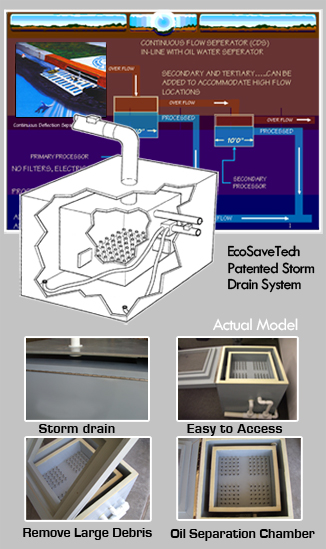Storm Drains
Each Interceptor and/or Storm Drain throughout the city or county should utilize a processing unit to handle the runoff. The working capacity of the recycling unit depends on the requirements of the department which handles the storm drains and street pollutant removal.
EcoSave Technologies, Inc. has introduced a patented process that can be fit into the existing wall of the storm drain and will prevent pollutants from passing to the Oceans, Lakes, and Rivers. After water entering the storm drains is treated, clean water is discharged. As an added benefit, bacteria and contamination are eliminated and heavy metals are reduced.

Learning as we go:
Ecosave has found through our initial Storm Drain placement in Oceangate, New Jersey that proper cleaning and maintenance is essential in maintaining optimal processing operations.
We are developing a solar-operated hydraulic pusher arm mechanism to clear biomass and trash.
“Looking at the results, your system does a great job of reducing the nutrient flow into Barnegat Bay!”
Ocean Gate Project, New Jersey / Barnegat Bay
1st Storm Drain Installation Interceptor
